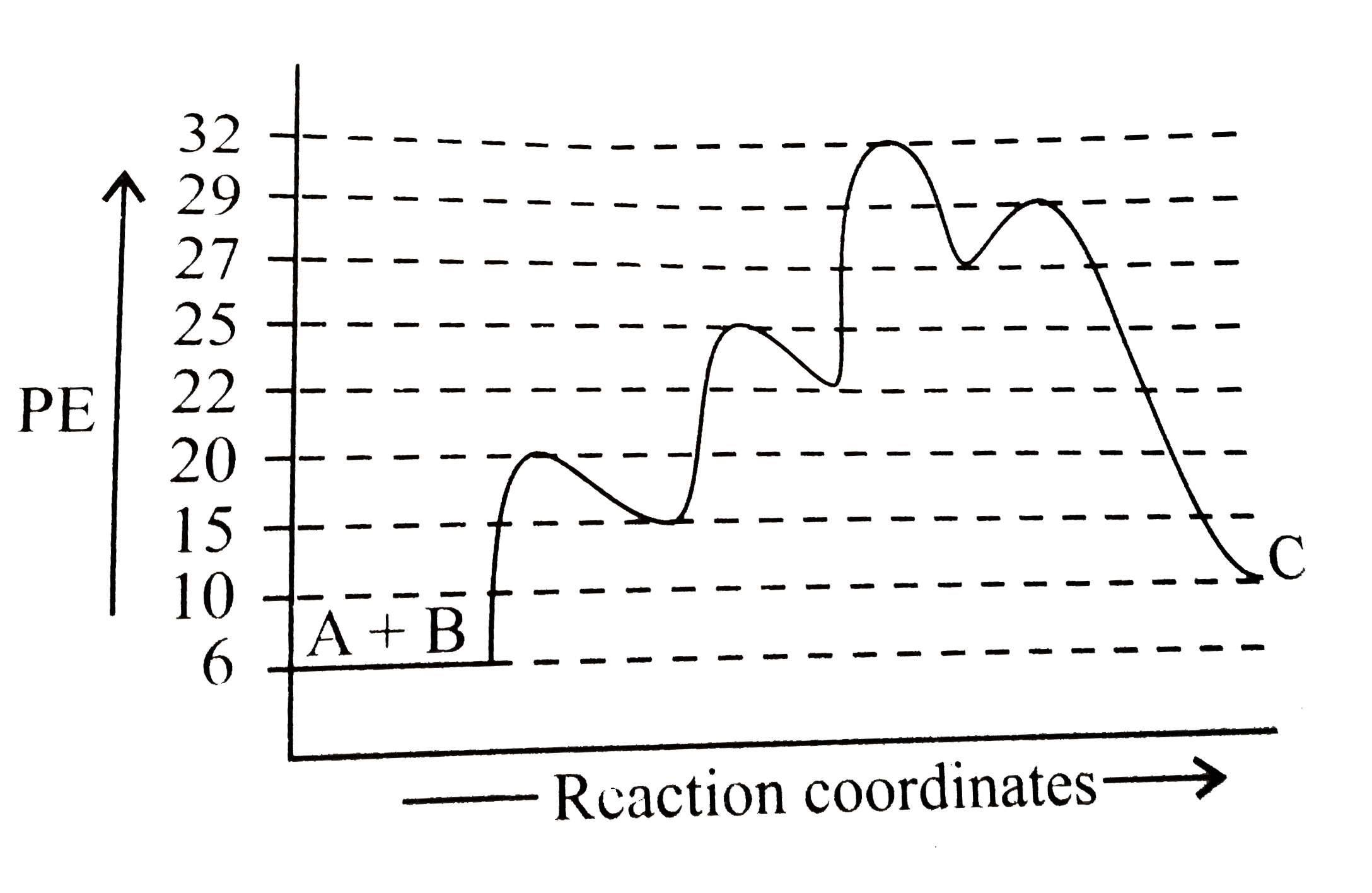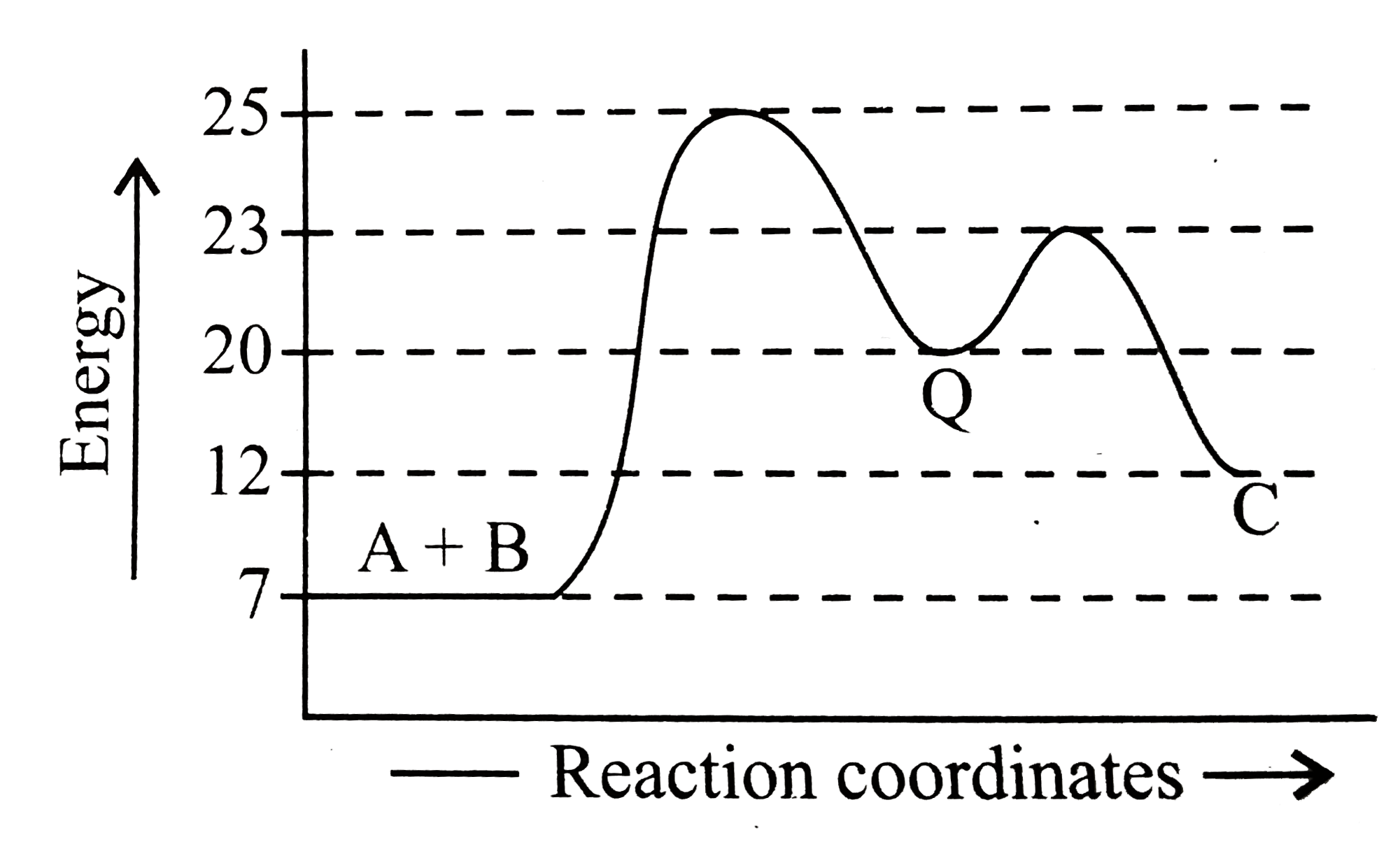Calculate electronegativity of carbon at Pauling scale Given that :
EH−H=104.2kcalmol−1EC−C=83.1kcalmol−1 ,
EC−H=98.8kcalmol−1.
Electronegativity of hydrogen =2.1.
To calculate the electronegativity of carbon using the Pauling scale, we can follow these steps:
1. Identify the given values:
- EH−H=104.2kcal/mol
- EC−C=83.1kcal/mol
- EC−H=98.8kcal/mol
- Electronegativity of hydrogen (XH)=2.1
2. Set up the equation using the Pauling scale:
The Pauling equation for electronegativity is given by:
XC−XH=0.208(EC−H−EC−C+EH−H2)1/2
Here, XC is the electronegativity of carbon that we need to find.
3. Substitute the known values into the equation:
XC−2.1=0.208(98.8−83.1+104.22)1/2
4. Calculate the average bond energy of C−C and H−H:
EC−C+EH−H2=83.1+104.22=187.32=93.65kcal/mol
5. Calculate the difference in bond energies:
98.8−93.65=5.15kcal/mol
6. Substitute this value back into the equation:
XC−2.1=0.208(5.15)1/2
7. Calculate the square root:
√5.15≈2.27
8. Now calculate the right side of the equation:
XC−2.1=0.208×2.27≈0.472
9. Solve for XC:
XC=2.1+0.472≈2.572
10. Round off to a suitable number of significant figures:
XC≈2.5
Final Answer:
The electronegativity of carbon on the Pauling scale is approximately 2.5.
- EH−H=104.2kcal/mol
- EC−C=83.1kcal/mol
- EC−H=98.8kcal/mol
- Electronegativity of hydrogen (XH)=2.1
The Pauling equation for electronegativity is given by:
XC−XH=0.208(EC−H−EC−C+EH−H2)1/2
Here, XC is the electronegativity of carbon that we need to find.
XC−2.1=0.208(98.8−83.1+104.22)1/2
EC−C+EH−H2=83.1+104.22=187.32=93.65kcal/mol
98.8−93.65=5.15kcal/mol
XC−2.1=0.208(5.15)1/2
√5.15≈2.27
XC−2.1=0.208×2.27≈0.472
XC=2.1+0.472≈2.572
XC≈2.5
The electronegativity of carbon on the Pauling scale is approximately 2.5.
Topper's Solved these Questions
- PERIODIC CLASSIFICATION OF ELEMENTS AND GENERAL INORGANIC CHEMISTRYBOOK - CENGAGE CHEMISTRY ENGLISHCHAPTER - PERIODIC CLASSIFICATION OF ELEMENTS AND GENERAL INORGANIC CHEMISTRYEXERCISE - Ex 1.1
14 Videos
- PERIODIC CLASSIFICATION OF ELEMENTS AND GENERAL INORGANIC CHEMISTRYBOOK - CENGAGE CHEMISTRY ENGLISHCHAPTER - PERIODIC CLASSIFICATION OF ELEMENTS AND GENERAL INORGANIC CHEMISTRYEXERCISE - Ex 1.1 (Very Short)
22 Videos
- PERIODIC CLASSIFICATION OF ELEMENTS AND GENERAL INORGANIC CHEMISTRYBOOK - CENGAGE CHEMISTRY ENGLISHCHAPTER - PERIODIC CLASSIFICATION OF ELEMENTS AND GENERAL INORGANIC CHEMISTRYEXERCISE - Exercises (Archives )Subjective
4 Videos
- P-BLOCK GROUP 14 - CARBON FAMILYBOOK - CENGAGE CHEMISTRY ENGLISHCHAPTER - P-BLOCK GROUP 14 - CARBON FAMILYEXERCISE - Exercises Archives (Subjective)
9 Videos
- PURIFICATION OF ORGANIC COMPOUNDS AND QUALITATIVE AND QUANTITATIVE ANALYSISBOOK - CENGAGE CHEMISTRY ENGLISHCHAPTER - PURIFICATION OF ORGANIC COMPOUNDS AND QUALITATIVE AND QUANTITATIVE ANALYSISEXERCISE - Assertion Reasoning Type
5 Videos
Similar Questions
Calculate the electronegativity of fluorine from the following data:
EH−H=104.4kcalmol−1,EF−F=36.6kcalmol−1
EH−F=134.3kcalmol−1,χH=2.1
View SolutionFrom the following data, calculate the standard enthalpy of formation of propane ΔfHΘCH4=−17kcalmol−1
ΔfHΘC2H6=−24kcalmol−1,BE(C−H)=99kcalmol−1
(C−C)=84kcalmol−1.
View SolutionWhat is ΔH for the reaction A+B→C where the mechanism involves several kinetics steps.

(a) 11kcal mol−1
(b)4kcal mol−1
(c) 5kcal mol−1
(d) 22kcal mol−1
View SolutionCalculate the enthalpy change during the reaction :
H2(g)+Br2(g)→2HBr(g)
Given, eH−H=435kJmol−1,eBr−Br=192kJmol−1 and eH−Br=368kJmol−1.
View SolutionCalculate ΔfHΘICI(g) from the data
ΔH dissociation CI2(g)=57.9kcalmol−1
ΔH dissociation I2(g)=36.1kcalmol−1
ΔH dissociation ICI(g)=50.5kcalmol−1
ΔH sublimation I2(g)=15.0kcalmol−1
View SolutionIn a multistep reaction such as A+B→Q→C. The potential energy diagram is shown below. What is Ea for the reaction Q→C ?

(a)3kcalmol−1
(b)5kcalmol−1
(c) 8kcalmol−1
(d) 11kcalmol−1
View SolutionCalculate Ksp for AgCI. Given:
ΔfHΘAg⊕=25.3kcalmol−1
ΔfHΘC1Θ=−40.0kcalmol−1
ΔfHΘAgC1=−30.36kcalmol−1
SΘAg⊕,SΘC1Θ, and SΘAgC1are 17.7,13.2 and 23.0calmol−1
View SolutionCalculate the lattice energy from the following data (given 1eV=23.0kcalmol−1)
i. ΔfHɵ(KI)=−78.0kcalmol−1
ii. IE1 of K=4.0eV
iii. ΔdissHɵ(I2)=28.0kcalmol−1
iv. ΔsubHɵ(K)=20.0kcalmol−1
v. EA of I=−70.0kcalmol−1
vi. ΔsubHɵ of I2=14.0kcalmol−1
View SolutionFind the electron affinity of chlorine from the following data. Enthalpy of formation of LiCI is −97.5kcalmol−1, lattice energy of LiCI=−197.7kcalmol−1. Dissociation energy of chlirine is 57.6kcalmol−1, sublimation enthalpy of lithium =+38.3kcalmol−1, ionisation energy of lithium =123.8kcalmol−1.
View SolutionCalculate the bond energy of N-N bond if heat of atomisation of NH3 and N2H4 are 'x' and 'y' kcal mol−1 respectively.
View Solution
